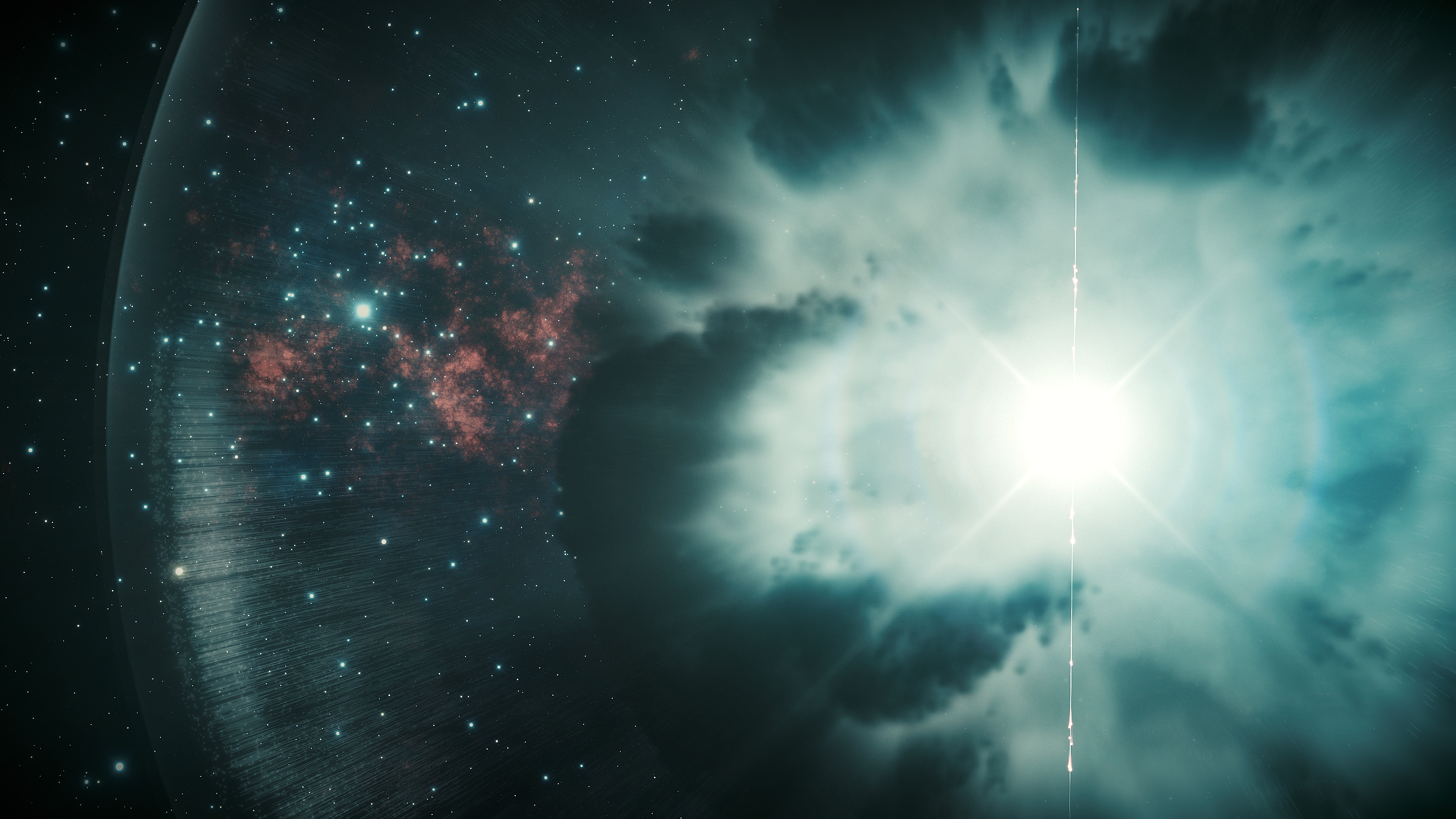We’ve detected the most powerful gamma-ray bursts on record

Gamma-ray bursts are the most powerful explosions in the known universe, thought to be released when a massive star collapses into a black hole or neutron star.
Now scientists have just discovered a pair of them more powerful than we could have imagined. In a trio of new papers published in Nature, two teams of astronomers report the detection of two gamma-ray bursts that each emitted energy readings that surpass the previous record-setting burst, including one that's over 10 times more powerful. It’s an unprecedented pair of findings that should help us find more of these exotic events and paint a clearer view of what was going on in distant parts of the universe billions and billions of years ago.
“Gamma-ray bursts are more powerful than we ever knew,” says Razmik Mirzoyan, an astrophysicist with the Max Planck Institute and a coauthor on two of the papers. “It’s absolutely remarkable.”
The detections were made by two observatories: the Major Atmospheric Gamma Imaging Cherenkov (MAGIC) system, which uses two telescopes situated on one of the Canary Islands, and the High Energy Stereoscopic System (HESS), an array of five telescopes in Namibia. Both sites use what are called imaging air Cherenkov telescopes (IACTs).
When high-energy gamma-rays hit Earth’s atmosphere, the interaction causes air molecules to turn into a cascade of electron-positron pairs. These pairs speed through the atmosphere, releasing something known as Cherenkov radiation. The IACTs observe this shower of radiation, and the resulting data can be reconstructed and analyzed to determine the energy and direction of the original high-energy photons—the gamma rays—that hit the atmosphere.
The first burst, GRB 190114C, was found on January 14. Initially detected by a pair of space telescopes, it was then verified and observed in depth by HESS once its coordinates were made known. MAGIC detected photon energies in GRB 190114C’s afterglow (the fading portion of the emission) that were above the teraelectronvolt (TeV) range, which is a trillion times more energetic than visible light (visible light is around 1 eV). Until now, the Crab Nebula has been the brightest known source of TeV energies. This new burst dwarfs those energies by a factor of 100 and is now the record holder for the brightest known source of TeV photons.
The second burst, GRB 180720B, was detected on July 20, 2018. It had energies well above 0.1 TeV, but still weaker than 1 TeV. Previous gamma-ray bursts had not been seen above 100 GeV. The bursts were measured in the afterglow phase, so the initial energies of the emissions must have been even higher, says Mirzoyan.
Follow-up observations using other observatories and instruments reveal that GRB 190114C came from a galaxy 4.5 billion light-years from Earth, while GRB 180720B originated 6 billion light-years away.
All gamma-ray bursts are produced outside the Milky Way, typically billions of light-years away in galaxies with a lot of massive star formation. Though we don’t know exactly what made these particular ones, we know they are both “long-duration” bursts. This means they are produced when a rare type of massive, rapidly spinning star suddenly collapses into a powerful black hole or a rapidly rotating highly magnetized neutron star called a magnetar, says Bing Zhang, an astrophysicist at the University of Nevada, Las Vegas, who was not involved in the studies. Either object can produce gamma-ray bursts, and in this case they were squarely beamed toward Earth, luckily for astronomers.
Beyond just being record-setting finds, the two new gamma-ray bursts give us some insight into exactly how these phenomena are produced. The only mechanism that could result in such high-energy emissions is an up-scatter of photons into higher energies, induced by collisions with accelerated electrons. Many scientists, including Zhang, have long theorized that such a mechanism existed.
As was the case with the detection of gravitational waves, the big hope is that this discovery means we’ll be able to spot more high-energy gamma-ray bursts, and characterize them in even more detail. Objects located billions of light-years away are incredibly difficult to stud. Gamma-ray bursts are some of the only signals we can detect that can tell us anything about what's occurring so far away.
This post has been amended to provide more context about the energy emitted by these latest burst detections.
Deep Dive
Space
How to safely watch and photograph the total solar eclipse
The solar eclipse this Monday, April 8, will be visible to millions. Here’s how to make the most of your experience.
How scientists are using quantum squeezing to push the limits of their sensors
Fuzziness may rule the quantum realm, but it can be manipulated to our advantage.
The race to fix space-weather forecasting before next big solar storm hits
Solar activity can knock satellites off track, raising the risk of collisions. Scientists are hoping improved atmospheric models will help.
Stay connected
Get the latest updates from
MIT Technology Review
Discover special offers, top stories, upcoming events, and more.